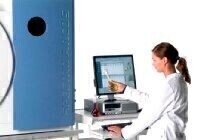Analytical Instrumentation
Analysis of Biodiesel
Jan 11 2008
Biodiesel (fatty acid alkyl esters) is produced from natural sources such as vegetable oils and animal fats. It is described as an alternative diesel fuel whose use improves the environmental conditions and makes a certain contribution to gaining energy sustainability and security in the transportation sector. Biodiesel operates in combustion-ignition engines just like petroleum diesel. In addition to the structural analysis of biodiesel, trace element determinations are required.
The concentration of phosphorus is regulated to below 10 mg/kg. Monitoring of Na, K, Ca and Mg is necessary due to their ability to form
undesirable compounds in the engines. As per EN14214 the sum of Na and K as well as Ca and Mg is limited to 5 mg/kg. The determination of Na and K in certain manufacturing processes of biodiesel is especially important since alkaline hydroxides are used as catalysts in the transesterification of vegetable oils to biodiesel.
Inductively coupled plasma optical emission spectrometry (ICP-OES) is widely used for the analysis of organic samples such as oils or fuels. The technique is described in the European norms EN14538 and EN14107.
Because of the excellent analytical figures of merit, such as multi-element capability, high power of detection, high precision and short
analysis time, the SPECTRO ARCOS ICP spectrometer with radial plasma observation has become an indispensable tool for elemental biodiesel analysis. It features a Paschen-Runge spectrometer mount, employing the proprietary Optimized Rowland Circle Alignment (ORCA) technique. Consisting of two hollow section cast shells with optimized small volume
and 32 linear CCD detectors, the wavelength range between 130 and 770 nm can be simultaneously analyzed, allowing complete spectrum capture within 2s. The optic is hermetically sealed and filled with argon, continuously circulated through a filter, which absorbs oxygen, water vapor and other species. High optical transmission in the VUV is achieved, allowing the determination of nonmetals as well as the use of prominent and interference free lines in this region. An aircooled ICP-generator, based on a free-running 27.12 MHz system, is installed, which ensures excellent stability of the forward power even in the case of rapidly changing sample loads.
All operating parameters are software controlled, allowing for an easy selection of the optimum operating conditions. To prepare biofuels for analysis using the SPECTRO ARCOS, only dilution with kerosene is necessary. The required sensitivity for the determination of Ca, K, Mg and Na is obtained and also non-metals can be determined with excellent detection limits. Additional advantages of the instrument are the high linear calibration range and the short analysis time, resulting in a high sample throughput, typically demanded for the production process.
Digital Edition
PIN 25.3 June/July
June 2024
Analytical Instrumentation - Recent Advances In Various Bench Scale Accelerated Oxidative Testing Methods For Fuels - Petrochemical Industry: Anton Paar Solutions Streamline Processes, Reduce H...
View all digital editions
Events
Jul 30 2024 Jakarta, Indonesia
Jul 30 2024 Jakarta, Indonesia
China Energy Summit & Exhibition
Jul 31 2024 Beijing, China
Jul 31 2024 Chengdu, China
Aug 05 2024 Moon Township, PA, USA


















